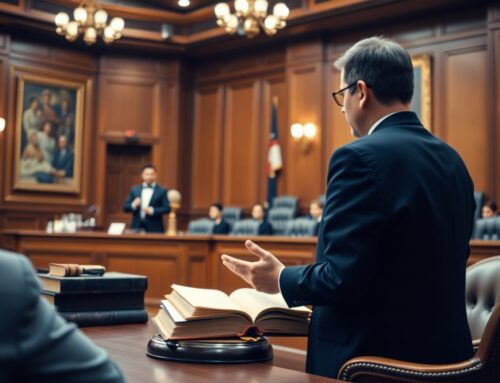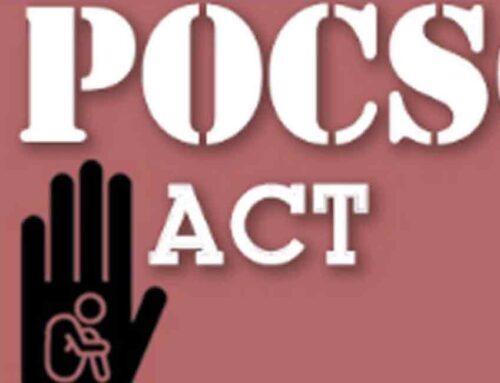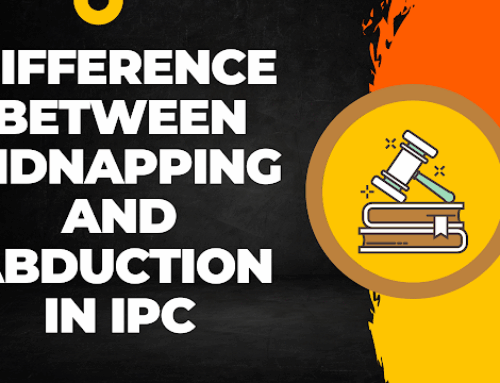– Abul Kalam Azad Sulthan, Advocate, High Court of Judicature at Madras and Madurai Bench of Madras High Court & Partner, Spicy Law Firm.
The post-mortem, although the correct term is Necropsy[1] (meaning ‘After death examination’), but that term is rarely used and widely called as Autopsy (meaning ‘See it for yourself’) is the key to decipher the perplexity in Medico-Legal cases.
Medico-legal benefits of Post-Mortems:
The post-mortem is used to find various medico-legal aspects from Cause of Death to number of persons involved[2] in cases of homicide etc. But it is the general belief, even among the professionals that the Post-mortem is just to reveal Cause of Death. In several cases, the cause of death is explicitly known without even touching the corpse. For example, if the death is caused by head injury in road accident, then there is no need to conduct post-mortem as the cause of death is obviously known to everyone. But the post-mortem is necessary to ascertain several other facts including manner of death, time of death and circumstances etc.
Social benefits of Post-Mortems:
The most important feature of the post-mortem is the social benefits we get from the post-mortems. The inventions like Car Seat Belts, Head Rests, Helmets and other Safety measures are based on the knowledge gained from the post-mortems. Innovations like Laminated glass to building safety measures are based on the vast information accumulated from the Autopsy tables for several decades. In the Medical field too, the post-mortem examinations are useful to evaluate the efficacy of new diagnostic tests, surgical procedures, drugs etc.
Hence it is important to videograph each and every post-mortem and preserve the same, not only to avoid re-post mortem examinations, but to gain vast knowledge for the benefit of the society.
Medico Legal Sacrilege:
As per the ‘Uniform Guidelines for Post Mortem work in India’[3] written by Dr.O.P.Murthy, Additional Professor cum Senior Demonstrator, Department of Forensic Medicine and Toxicology, All India Institute of Medical Sciences, New Delhi, published in ‘Journal of Forensic Medicine & Toxicology Vol. 30 No. 1 & 2, January – December 2013’,
” Autopsy is being requested by Investigative Agencies-Police under Section 174 Cr PC and /or Magistrate under Section 176 Cr P C with following objectives :
1. To find out cause of death
2. To find factual, objective, medical information for law enforcing agencies and court.
3. To allow proper recovery and preservation evidence
4. To document injuries and disease
5. To determine manner of death
6. To know time of death
7. To reconstruct Crime Scene
8. To provide correlation of facts and circumstances related to the death
9. To help in identification of victim, etc.”
But it is unfortunate that even the persons holding top posts in the Department of Medical Education, Tamil Nadu are not aware that determination of manner of death is an objective of the Post Mortem. It is really a sorry state of affair and can be considered as ‘Medico Legal sacrilege.’
Videographing of Post-Mortems:
Audio-Visual recording of Post-mortems is necessary and it is not difficult to implement in this technologically advanced era. Many experienced Forensic Medicine Experts from prestigious institutions like AIIMS support the idea of videotaping the post-mortem examination.
In the ‘Uniform Guidelines for Post Mortem work in India’[4] referred above, it is also stated by Dr.O.P.Murthy that “Every Postmortem Center should be provided with digital camera, videographer facilities, computers for computerized reports and all above mentioned items are helpful in providing quality services and efficient work.”
When videography can be done for custodial deaths, why not for other unnatural deaths? There is no justification in prattling against videography of post-mortems except aiding to conceal the irregularities and illegalities in conducting post-mortems.
Important features of Post Mortem Procedure in USA:
Coroners (Administrators with legal background appointed to enquire suspicious deaths) or Medical Examiners order for Post-mortems in the cases of suspicious deaths and other medico-legal cases. Photograph and Videograph of scene of death and in the course of post mortem examination are preserved at Coroner’s office. It is imperative that the Forensic Medicine Experts are required to visit the death scene and record the findings. Any person wishing to inspect or obtain a copy of the Photographs and Videographs may approach the appropriate Court to get order.
Other than Audio-Visual recording, the procedure followed in USA makes it necessary for the Forensic Medicine Expert to visit the death scene.
Serafettin Demirci and Kamil Hakan Dogan in their peer-reviewed chapter[5] titled ‘Death Scene Investigation from the Viewpoint of Forensic Medicine Expert’ wrote as follows:
“The purpose of having the forensic medicine expert attend the death scene is several fold. By viewing the body in the context of its surroundings, the forensic medicine expert is better able to interpret certain findings at the autopsy such as a patterned imprint across the neck from collapsing onto an open vegetable drawer in a refrigerator. The forensic medicine expert is also able to advise the investigative agency about the nature of the death, whether to confirm a homicide by a specific means, evaluate the circumstances to be consistent with an apparent natural death, or interpret the blood loss from a deceased person as being more likely due to natural disease than to injury. This preliminary information helps the investigative agency to define its perimeter, structure its approach, organize its manpower, secure potentially important evidence, and streamline its efforts. Nonattendance at death scenes has been regarded as one of the classical mistakes in forensic pathology.”
Important features of Post Mortem Procedure in UK:
There is an act called ‘Human Tissue Act 2004’ which regulates all activities involving Human Tissue in UK. There is a Human Tissue Authority constituted under this act and Post-mortem facilities are regularly inspected to ensure that they work to the high standards set out by this Human Tissue Authority.
The Next of Kin have the right to be represented at the post-mortem by a medical practitioner. This could be the General Physician or another pathologist.[6]
In England & Wales, the duty of visiting the death scene is formalised and it is a part of contract of service for the full-time Forensic Medicine Experts.
HSE Standards and Recommended Practices for Post Mortem Examination Services:
According to the HSE Standards, all audio, visual or photographic recordings should be forwarded to the coroner’s office as part of the coroner’s post mortem examination report.
Some important re-post mortem cases in India:
Tandoor Murder Case:
In the murder case of Naina Sahni, the case is widely known as Tandoor murder case, the murderer husband Sushil Sharma, killed his wife Naina Sahni, chopped her body and dumped in the Tandoor of a famous restaurant. The first post-mortem conducted at Lady Hardinge Medical College was erroneous and according to it, the death was caused by burn injuries.
The second post-mortem conducted by Doctors from three different hospitals revealed that there were two bullets penetrated her body, one in the Head and another in the neck.[7] This second post-mortem changed the direction of the case and led to conviction of Sushil Sharma.
The Infamous Scarlet Keeling Case:
Initial Post-Mortem report concluded that the cause of death as drowning. There was no wound/injury as per the first post-mortem report. But the mother of the victim could find several injuries with naked eye and fought for re-post mortem. The Second Post-Mortem report revealed that she was drugged, raped and killed.[8] The third post mortem[9] conducted in United Kingdom revealed that some organs were found missing from her body.
Dr Luv Sharma’s paper:
In the case-study based paper namely ‘Second Autopsy – A Bane or Boon’[10], Dr. Luv Sharma, Dr. Vijay P. Khanagwal, Dr. Basant Lal Sirohiwal, Dr. P.K. Paliwal, and Dr. D.R.Yadav, Department of Forensic Medicine, Pt. B.D. Sharma Postgraduate Institute of Medical Sciences, Rohtak, Haryana expressed their anguish. In this case the second post-mortem was conducted by the above said experts and the first post-mortem report stated that the death was caused due to a railway accident. But when the body was sent for re-examination, it was found that the first autopsy was not at all carried out. In the words of Dr.Luv Sharma, “On inspection, the body showed no signs whatsoever of any post mortem examination. No incision, no cuts, no stitches, no nothing! In fact it had not been touched by the medical officer who had so painstakingly written his post mortem report….
…The inexperienced medical officer, not having even touched the body, God knows why, wrote down a postmortem report and tried to opine the cause and manner of death to be railway accident and suicidal respectively. It seems, he did not even can to see the body properly as he described the neck to be transected! Had he had even a cursory look at the neck, he would have been able to see the bruises caused by manual strangulation. The absence of infiltration of blood at transected ends of limbs (as described to be amputated and ante mortem by him) was also missed by him. The police had provided him photographs (see illustrations I and II) taken after recovery of the body clearly showing the neck to be intact. Such carelessness, whether intentional or not, deserves to be condemned.
Thus the second autopsy was a not only a boon for proper justice to the deceased by also a bane as it showed clearly the lack of initiative and knowledge on the part of Medical Officer and also that if the initial postmortem had been carried out in proper sequence and procedure the unnecessary harassment of deceased relatives could have been avoided.”
Therefore it is imperative and high-time that the authorities should awake and frame the necessary guidelines for conducting the post-mortems, as people already started losing trust in the Autopsy reports.
Suggestions:
General guidelines need to be framed for conducting post-mortems and the guidelines must be strictly adhered by all centers conducting post-mortems. The guidelines should ensure transparency and integrity in every step of Post-mortem.
General guidelines need to be framed as to which cases can be subjected to second autopsy[11].
Basic training in forensic medicine and a structured Continuing Medical Education (CME) program to update the skills and knowledge, for all those involved in the post-mortem procedures
Audio Visual recording of post-mortems and preservation of the same.
An Ethics committee must be formed and guidelines need to be framed for using the Post-mortem reports and databases to conduct research for the benefit of society.
As the lacuna is apparent[12], concerned authorities should make sure that the MBBS and Post Graduate students are strictly undergoing necessary practical training in all practical subject taught during the course of study.
[1] Necropsy or Autopsy? It’s All About Communication! – M. Law, P. Stromberg, D. Meuten
[2] Postmortem: How Medical Examiners Explain Suspicious Deaths – Stefan Timmermans
[3] Journal of Forensic Medicine & Toxicology Vol. 30 No. 1 & 2, January – December 2013
[4] Journal of Forensic Medicine & Toxicology Vol. 30 No. 1 & 2, January – December 2013
[5] Post Mortem Examination and Autopsy: Current Issues From Death to Laboratory Analysis – Kamil Hakan Dogan
[6] Guidelines issued by Royal College of Pathologists
[7] Trials of Truth: India’s Landmark Criminal Cases – Pinky Anand
[8] The Sea of Innocence – Kishwar Desai
[9] Daily Mail Newspaper Article – 02 April 2008
[10] Anil Aggrawal’s Internet Journal of Forensic Medicine and Toxicology
[11] Second Autopsy – SS Agarwal
[12] The status of forensic medicine in India – Indian Journal of Medical Ethics







Leave A Comment